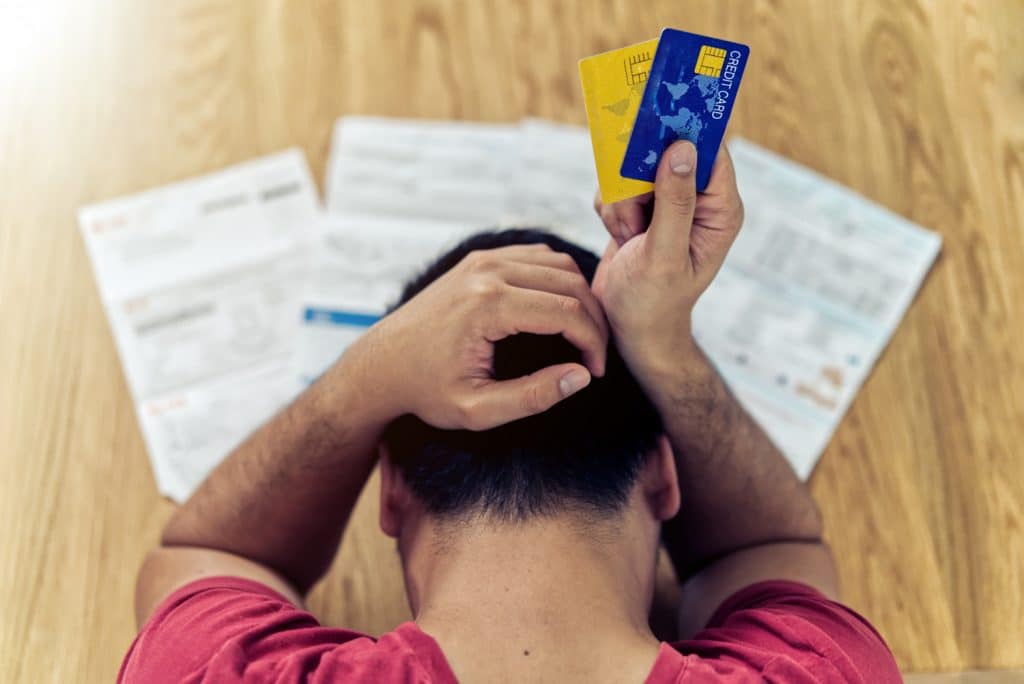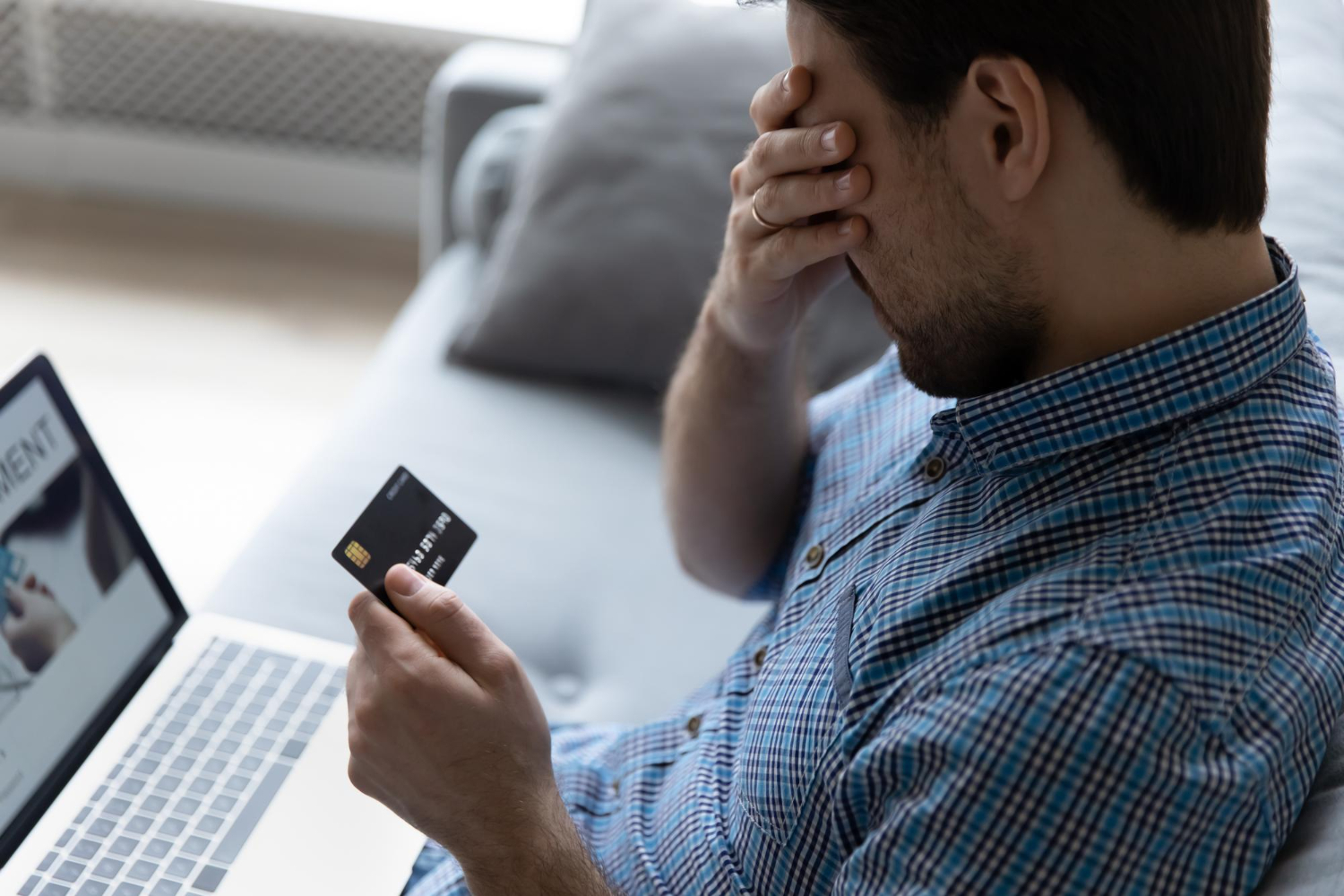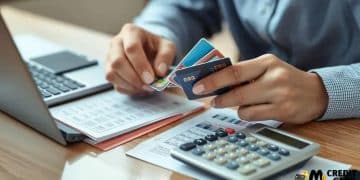Credit card debt cycle: How to regain control of your financial life

Anúncios
Understanding how the credit card debt cycle works, recognizing warning signs, and taking practical steps to regain financial control can help you avoid long-term financial struggles.
Credit card debt can quickly spiral out of control, trapping individuals in a frustrating cycle of borrowing and payments.
With high-interest rates and growing balances, breaking free from this cycle is challenging—but not impossible.
Anúncios
What is a credit card debt cycle?
A debt cycle occurs when a person continuously relies on borrowed money — such as credit cards — to cover expenses, leading to an ongoing pattern of accumulating debt.
This often starts with small purchases, but escalates as compound interest and minimum payments become overwhelming.
Eventually, individuals may find themselves taking out loans just to stay afloat, deepening their financial burden. Credit card debt cycles are particularly dangerous due to high-interest rates.
Anúncios
If you only make the minimum payment, your balance will continue to grow, making it harder to pay off.
This can trap you in a vicious financial cycle, where debt repayment becomes a long-term challenge rather than a short-term solution.
Signs you are stuck in a credit card debt cycle
Recognizing when your debt has become unmanageable is the first step to financial recovery. Here are the key warning signs that you might be trapped in a credit card debt cycle:
1. You’re only making the minimum payment
One of the biggest indicators of a debt cycle is making only the minimum payment on your credit card each month.
While this may seem like an easy way to manage debt, it actually extends your repayment period and allows interest to accumulate quickly.
Over time, you could end up paying double or even triple the original amount borrowed. If you can’t afford to pay more than the minimum, it’s a sign that your credit card debt is out of control.
2. Your credit card balances keep growing
If your balances keep increasing despite making regular payments, it likely means that your interest charges are outpacing your payments.
This happens when your monthly spending exceeds your payments, leaving you in a situation where your debt never decreases.
Credit card companies charge high-interest rates, and if you don’t pay your balance in full, your debt can become an overwhelming financial burden.
3. You’re using credit for daily expenses
Credit cards should ideally be used for emergencies or planned purchases that you can quickly pay off.
If you rely on credit cards for essentials like groceries, gas, rent, or utilities, it’s a clear sign that your income isn’t covering your daily expenses.
This can push you further into a debt cycle, since you’ll eventually need to borrow more just to keep up with regular bills.

4. You regularly max out your credit cards
Maxing out your credit cards—or reaching your credit limit—is a dangerous financial habit.
When your credit utilization (the percentage of available credit you’re using) is too high, your credit score takes a hit, making it harder to qualify for loans or lower interest rates in the future.
If you’re constantly maxing out your credit cards and struggling to pay them off, it’s a strong indication that you’re trapped in a credit card debt cycle.
5. You’re using one form of credit to pay another
If you’re taking out personal loans, balance transfers, or opening new credit cards just to cover existing debt payments, you’re only delaying the problem instead of solving it.
While these strategies may provide temporary relief, they don’t eliminate the root cause of the issue.
In fact, relying on new credit to pay off old debt can lead to even higher interest payments and worsen your financial situation.
How to break the credit card debt cycle
Breaking free from a credit card debt cycle requires discipline, financial awareness, and a solid plan.
The following steps can help you take control of your finances and eliminate debt for good.
1. Create a budget and stick to it
A budget is your most powerful tool for financial control. Start by listing all your sources of income and fixed expenses such as rent, utilities, insurance, and loan payments.
Then, track discretionary expenses like entertainment, dining out, and shopping to identify areas where you can cut back.
Once you have a clear understanding of where your money is going, allocate a fixed amount each month for debt repayment.
There are many budgeting apps that can help you stay on track, making it easier to avoid overspending and prioritize financial goals.
2. Stop using credit cards for daily purchases
If you want to break the debt cycle, you need to stop relying on credit cards for everyday expenses. Instead, switch to using cash, a debit card, or a prepaid card whenever possible.
Research shows that people tend to spend less when using cash because they physically see the money leaving their hands.
If you need to use a credit card, make sure it’s for planned purchases that you can pay off in full before interest accrues.
This will prevent your debt from continuing to grow.
3. Cut unnecessary expenses
To free up more money for debt repayment, identify and eliminate unnecessary expenses. Some effective ways to cut costs include:
- Canceling streaming services, magazine subscriptions, or memberships you rarely use.
- Cooking at home instead of dining out, which can save hundreds of dollars per month.
- Shopping smarter by taking advantage of discounts, coupons, and second-hand items.
- Reducing impulse spending by implementing a 24-hour rule before making non-essential purchases.
By making these small adjustments, you can redirect more money toward paying off your credit card debt faster.
4. Consider debt consolidation
If you have multiple credit cards with high-interest rates, consolidating your debt can make repayment easier and more affordable. Some common debt consolidation options include:
- Balance Transfer Credit Cards: Some credit cards offer 0% APR introductory periods, allowing you to transfer your balance and pay off debt without accumulating additional interest.
- Personal Loans: A fixed-rate personal loan can help consolidate credit card debt into a single payment with a lower interest rate.
Before consolidating, compare your options carefully and choose the one that best fits your financial situation.

5. Seek credit counseling
If you feel overwhelmed by debt, working with a nonprofit credit counseling agency can provide guidance and relief. A professional credit counselor can:
- Help you create a personalized debt repayment plan.
- Negotiate lower interest rates with your creditors.
- Provide financial education to prevent future debt cycles.
Be cautious of debt settlement companies that charge high fees and promise unrealistic results. Always research your options before committing to any program.
6. Build an emergency fund
One of the main reasons people fall into a debt cycle is not having savings for unexpected expenses.
Emergencies like car repairs, medical bills, or job loss can force individuals to rely on credit cards, making it harder to escape debt.
To avoid this, start saving at least $500–$1,000 for emergencies.
Gradually work toward 3–6 months’ worth of living expenses to build a strong financial safety net.
This will help you avoid relying on credit cards in the future.
Breaking the credit card debt cycle is challenging, but with the right strategies, it’s entirely possible.
By budgeting, cutting unnecessary expenses, avoiding credit reliance, and seeking professional guidance when needed, you can take significant steps toward financial freedom.
If you’re struggling with debt, explore more financial tips and solutions on our website. Stay informed and take control of your financial future today!
Need a recommendation? Read our guide on why your loan application might be denied.





